As people approach their retirement age, many start thinking about their healthcare needs and how they can be covered. Medicare is a federal health insurance program that provides coverage to people aged 65 and above, as well as to those with specific disabilities and medical conditions. However, navigating the Medicare enrollment process and understanding eligibility can be confusing. In this blog, we will answer some frequently asked questions about Medicare eligibility and enrollment.
What is Medicare?
Medicare is a federal health insurance program that provides coverage for people aged 65 and above, as well as to those with certain disabilities and medical conditions such as ERSD (end-stage renal disease) and ALS (amyotrophic lateral sclerosis). The program is divided into different parts that cover specific healthcare services.
Medicare Part A covers inpatient hospital care, skilled nursing facility care, hospice care, and some home health care.
Medicare Part B covers doctor visits, outpatient care, medical supplies, and preventive services.
Medicare Part C, also known as Medicare Advantage, is a private insurance plan that provides all the benefits of Parts A and B, as well as additional benefits like dental, vision, and hearing coverage.
Medicare Part D covers prescription drug costs.
Who is eligible for Medicare?
To be eligible for Medicare, you must be:
- Aged 65 or older, OR
- Under 65 with certain disabilities, OR
- Any age with end-stage renal disease (ESRD) or amyotrophic lateral sclerosis (ALS), also known as Lou Gehrig’s disease.
If you or your spouse have worked and paid Medicare taxes for at least 10 years, you are eligible for premium-free Medicare Part A. If you do not meet this requirement, you may still be eligible for Medicare, but you will have to pay a premium.
When can I enroll in Medicare?
The Initial Enrollment Period (IEP) for Medicare is a seven-month window that begins three months before your 65th birthday month and ends three months after your birthday month. If you enroll during this period, your coverage will start on the first day of your birthday month.
If you do not enroll during your IEP, you may be subject to a late enrollment penalty, and your coverage may not begin until later in the year. During this enrollment period, you can choose Medicare Advantage instead of Original Medicare. There are also certain enrollment periods throughout the year, such as the General Enrollment Period, the Special Enrollment Period, and Annual Enrollment Period which may apply to certain situations.
In particular, the General Enrollment Period (GEP) is a period each year from January 1 through March 31 when individuals who are eligible for Medicare Parts A and B can enroll in Medicare Advantage plans but only if this is their first time to enroll in Original Medicare. The Special Enrollment Period (SEP) is a period outside of the GEP when individuals may be able to enroll in Medicare Advantage plans or prescription drug plans if they experience certain life events, such as losing other health coverage or moving to a new area.
During the Annual Enrollment Period (AEP), which runs from October 15 to December 7 each year, you have the opportunity to make changes to your Medicare coverage. This includes the ability to select a new Medicare Advantage plan, switch between Original Medicare and Medicare Advantage, and make changes to your Part D prescription drug coverage.
Therefore, the situations in which the enrollment periods may apply could include turning 65 and becoming eligible for Medicare, experiencing a qualifying life event such as losing health coverage, or wanting to switch from one Medicare plan to another during the annual enrollment period.
How do I enroll in Medicare?
If you are already receiving or eligible for Social Security benefits when you turn 65, you will be automatically enrolled in Medicare Parts A and B. If you are not receiving Social Security benefits, you will need to enroll yourself. You can enroll in Medicare online at the Social Security website, by calling Social Security, or by visiting a Social Security office in person.
Suppose you are interested in enrolling in a Medicare Advantage plan or a Medicare Part D plan. In that case, you can do so during your Initial Enrollment Period or during the Annual Enrollment Period, which runs from October 15th to December 7th each year.
What is the cost of Medicare?
The cost of Medicare depends on several factors, including the specific parts you are enrolled in, your income level, and any additional coverage you may have. Here is a breakdown of the costs for each part:
- Medicare Part A: If you or your spouse have worked and paid Social Security Medicare taxes for at least 10 years, you will not have to pay a premium for Part A. If you do not meet this requirement, you may have to pay up to $505 per month in 2023.
- Medicare Part B: The standard monthly premium for Part B in 2023 is $164.90, although this amount may be higher if your income exceeds a certain level.
- Medicare Part C: The cost of Medicare Advantage plans varies depending on the specific plan and the insurance company offering it. Some plans have low or no monthly premiums but lower out-of-pocket costs.
- Medicare Part D: The cost of Part D plans also varies depending on the specific plan and the insurance company offering it. You will pay a monthly premium for the plan, as well as copayments or coinsurance for your prescription drugs. However, the national-based monthly premium for drug plans is approximately 32.74$ in 2023.
It’s important to note that there may be additional costs for services not covered by Medicare, such as dental, vision, and hearing care.
Can I change my Medicare coverage during enrollment periods?
Yes, you can change your Medicare coverage during certain enrollment periods. For example, during the Annual Enrollment Period from October 15th to December 7th, you can switch from Original Medicare to a Medicare Advantage plan or vice versa. You can also switch between Medicare Advantage plans or Part D plans during this time.
Additionally, other enrollment periods may allow you to make changes to your coverage, such as the Medicare Advantage Open Enrollment Period and the Special Enrollment Period.
Medicare Advantage Open Enrollment Period (OEP): This enrollment period runs from January 1 to March 31 each year. During this time, you can switch from one Medicare Advantage plan to another, or switch from a Medicare Advantage plan back to Original Medicare with or without a Part D prescription drug plan.
Special Enrollment Period (SEP): This enrollment period allows you to make changes to your Medicare coverage outside of the annual enrollment period if you experience certain qualifying life events. Examples of qualifying life events include moving to a new address, losing health coverage, or being diagnosed with a chronic health condition. The specific rules for eligibility and the duration of the SEP may vary depending on your situation.
It’s important to review your Medicare coverage every year to ensure that it still meets your healthcare needs and budget.
What happens if I miss the enrollment deadline?
If you miss your Initial Enrollment Period, you may have to pay a late enrollment penalty for Medicare Part B and Part D. The penalty is calculated based on the number of months you were eligible for coverage but did not enroll, and it can add up to a significant amount over time.
Assuming you didn’t qualify for a Special Enrollment Period, waiting for 24 months (2 full years) to enroll in Part B will result in a late enrollment penalty of 20%. This penalty is calculated by adding 10% for each full 12-month period that you could have enrolled in Part B. Additionally, you will be required to pay the standard Part B monthly premium, which is $164.90 in 2023.
Also, suppose that you were eligible for Medicare Part D coverage starting on January 1, 2020, but you didn’t enroll until January 1, 2023, which means you had a gap in coverage of 36 months. During this time, you didn’t have any other creditable prescription drug coverage.
To calculate the late enrollment penalty, Medicare would multiply 1% of the national base beneficiary premium ($32.74 in 2023) by the number of uncovered months you had, which is 36.
So, the penalty amount would be:
1% of $32.74 = $0.3274
$0.3274 x 36 months = $11.79
Therefore, your monthly Part D premium would be increased by approximately $11.79 (rounded to the nearest $.10), in addition to the standard Part D premium.
Additionally, if you miss the Annual Enrollment Period, you may have to wait until the next enrollment period to make changes to your coverage, unless you qualify for a Special Enrollment Period.
What if I have other insurance coverage am I Eligible for Medicare?
If you have other insurance coverage, such as through an employer or a spouse’s employer, you are still eligible for Medicare. However, you may need to coordinate your coverage to ensure that you are not overpaying for healthcare services.
If you have employer-sponsored health insurance, you may be able to delay enrolling in Medicare Part B without penalty as long as you or your spouse are still working and covered by the employer plan. If you or your spouse is still employed and receiving healthcare coverage from an employer or a creditable source, you can delay enrolling in Medicare Part B or Part D without incurring a penalty. However, once your employer coverage ends, you must enroll in Part B during a Special Election Period (SEP) to avoid a late enrollment penalty. The SEP is an 8-month period that starts when your employer coverage ends or when you stop working, whichever comes first.
However, it is not recommended that you are delaying Part B enrollment if you or your spouse are working in a company that has less than 20 employees because in that case Medicare pays first and group health insurance through employment pays second.
However, if the case is that you’re working in a company that has more than 20 employees it is may a good thing to delay your Part B enrollment. The reason for this is that you have creditable coverage and your employer health plan pays first, and Medicare pays second.
If that is the case don’t forget to enroll during the SEP to avoid late enrollment penalties.
In conclusion, Medicare eligibility and enrollment can be confusing, but understanding the basics can help you make informed decisions about your healthcare coverage. If you have any questions or concerns, don’t hesitate to reach out to a Medicare representative or a licensed insurance agent here at Texas Medicare Advisors. Remember to review your coverage every year to ensure that it still meets your healthcare needs and budget.








